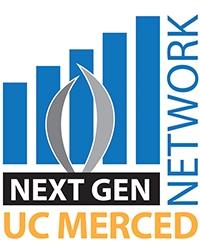Next Generation Network: Why It's a Really Big Deal
 During one of the recent Next Generation Network (NGN) planning meetings, a campus constituent asked about Information Technology's effort to overhaul the system.
During one of the recent Next Generation Network (NGN) planning meetings, a campus constituent asked about Information Technology's effort to overhaul the system.
“What will prevent this from happening again in 10 years?” he asked.
The answer is in the history of how the old network was designed.
Just as our campus is in a state of construction, so is the network. Between budget constraints and major shifts in network and technology use, UC Merced’s wired and wireless network components have been assembled together over the course of a decade. That means the oldest components with an “end-of-life” cycle of five years are now five years overdue for replacement.
While the budget for the initial purchase and installation of network components was included in the cost of the buildings, funding for these components' renewal was not.
Imagine the old network is like your favorite pizza restaurant with two delivery trucks. Two trucks are perfect to serve a small town, and everyone gets their pizza on time. But as demand grows, pizza orders take too long to fill or show up cold, and customers become unhappy. Decisions have to be made to determine how to best meet the demands without breaking the bank.
This reactive business model — in a constant state of catch-up — reflects the network infrastructure’s current state, which is exactly why the Next Generation Network is a big deal. This master-planned project replaces outdated, end-of-life components and software with standardized, top-notch emerging technology. But it also accounts for the new technology’s lifespan — something that was missing when the old network was designed.
With a consistent approach for scheduling and budgeting of renewal and replacement, UC Merced can anticipate and be prepared for end-of-life components before they become an issue.
What a Difference a Decade Makes
Why wasn’t the network built this way from day one? It’s easy to look back and see how the less powerful components and small number of wireless access points would pose a problem with a modern campus, but that fails to take into account how much the way we use the network has changed in the past 10 years.
Wireless Internet access was once considered a luxury for the tech-savvy. Portable devices with Internet capability leveraged cellular data with considerable monthly fees. While setting up a wireless access point for a university or business was not unheard of, public wi-fi was not as commonplace, due to the comparative cost versus demand — remember, the first iPhone wasn’t released until 2007.
With just the shift from wired to wireless, the effectiveness of the network infrastructure was greatly impacted. And, consider that the average student and staff and faculty member usually carries at least two wireless-enabled devices with them at any time. Campuswide, that’s a lot of devices.
Kolligian Library was the first building to switch over to the Next Generation Network, called CatNet. Although the old network is still accessible in that building — it must remain available until all campus buildings are upgraded — the campus community can immediately enjoy the benefits of faster, more reliable Internet access there.
Faculty and staff members will experience fewer network-related interruptions, and students benefit from improved connectivity to media-rich course materials while studying in the Lantern. That’s a good deal for everyone, no matter how you slice it.
